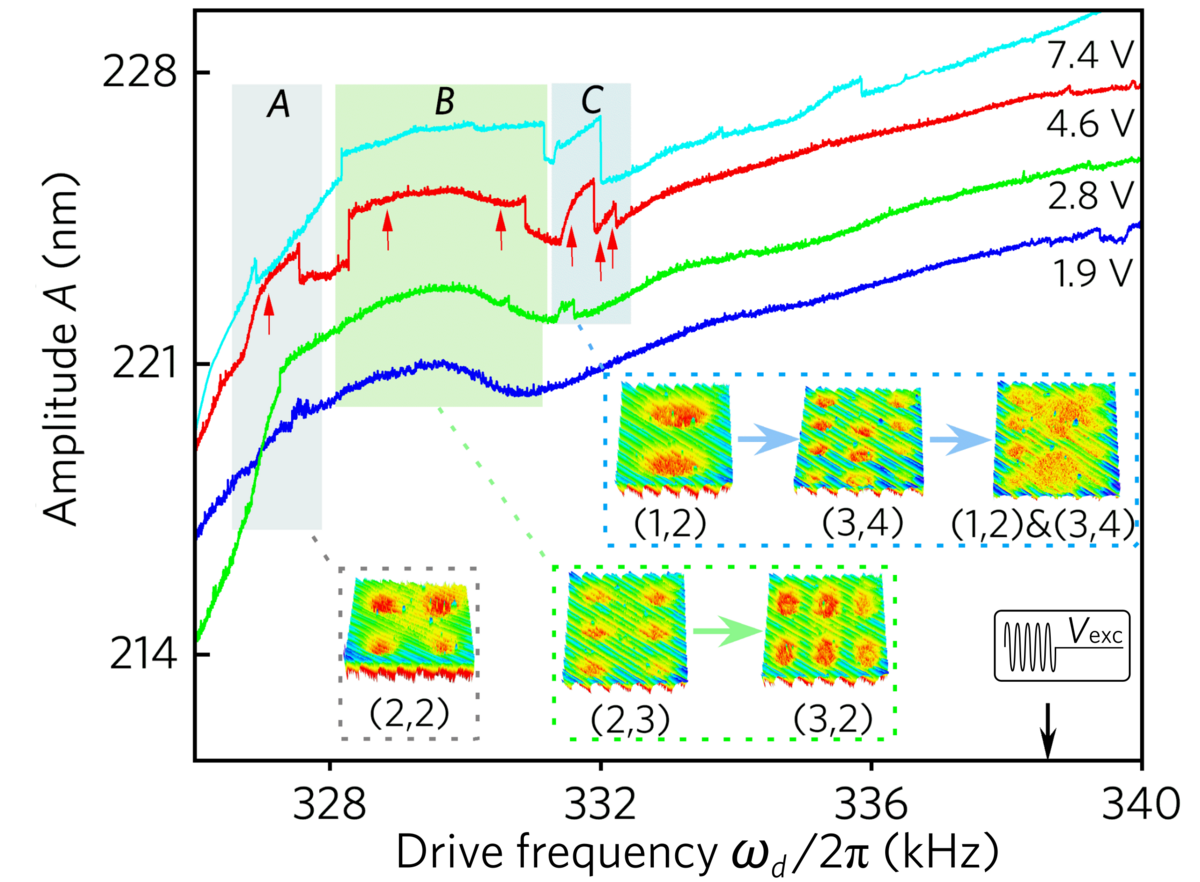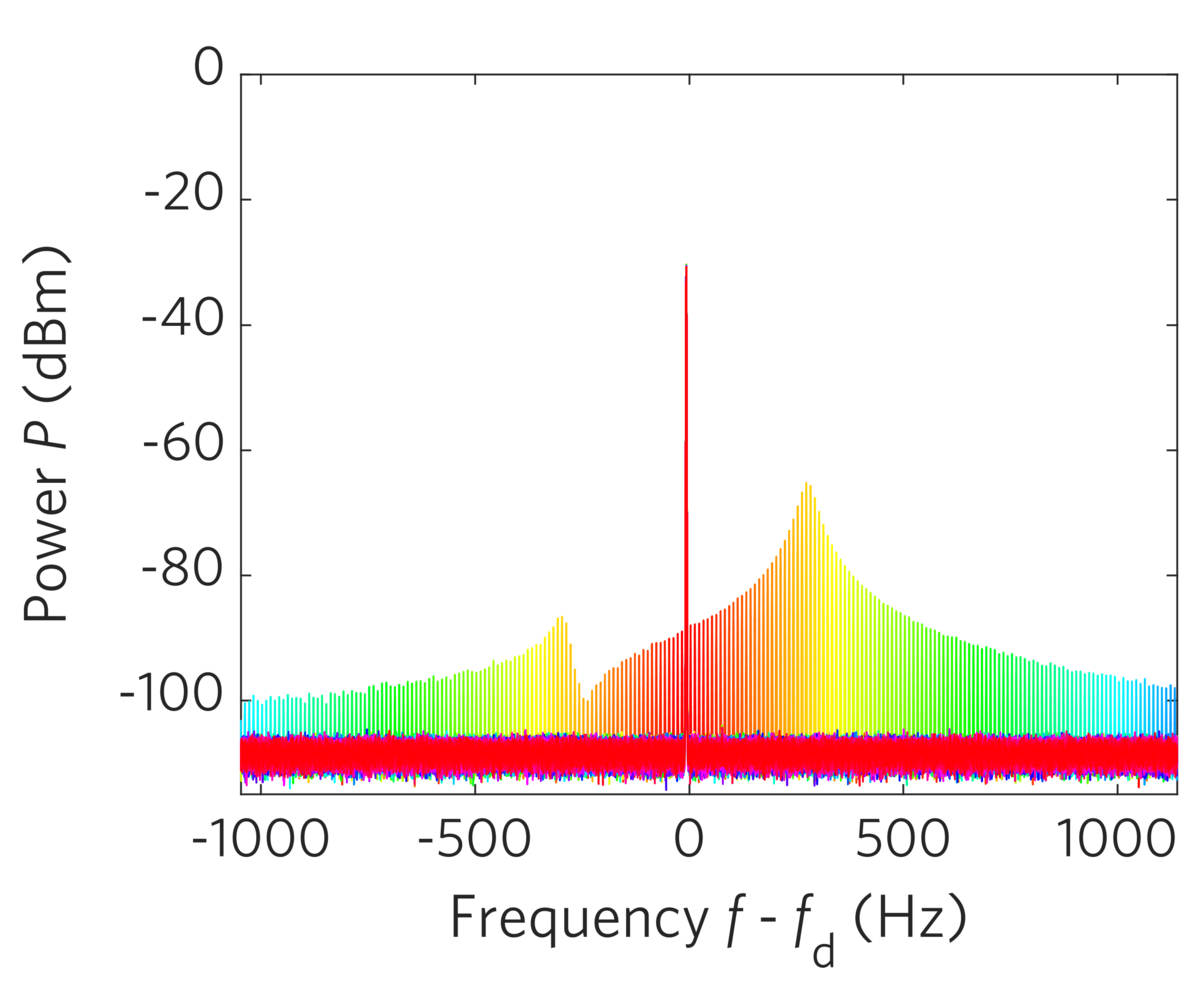Deciphering the mode shapes of vibrations of nanopatterned membrane is paving the way for the applications of nanoscale membrane which rely on particular properties of the vibrational excitations. The strongly driven nanomembrane resonators operated in the extreme nonlinear regime, hallmarked by unconventional dynamic response, includes localized overtones and a plateau formation of the resonance curves.

The mode shape and amplitude response of bending waves in Graphene [1], thin Si, SiC and SiN free-standing membranes are measured as a function of space and time, using an Auto-Phase-Shift in Stroboscopic (APSStro) [2] and Vibrometry in Continuous Light (VICL) [3] interferometric method running at an Imaging Wight Light Interferometer (IWLI). With these methods we have fully access of the characterization of mechanical properties of the membrane, for example, determine the dispersion relation of membrane in a frequency range up to 12 MHz [2], subtract the distribution of the lateral tensor components of the prestress [4].

The laser Michelson Interferometer (MI) and Laser Quadrant Vibrometer (LQV) are developed to access the dynamic of the vibration modes optically. In the meantime, the magnet induced voltage measurement system is built for the non-optical characterization, with local real-time nano-probe signal dynamic measurement. We attempt to reveal the microscopic mechanism of the nonlinear coupling. We investigate how the response can be tailored by nanopatterning and how it depends on the quality factor and material properties of the resonators. We furthermore explore fluctuation-driven resonance phenomena like side-band formation or the onset of chaotic behavior, see project SFB1432 C03.
The interactions and dissipation effects in strongly driven nonlinear vibrational state of membrane are investigated by optical interferometry recently. We show a unique deflection pattern of membrane resonators under strong drives, localized overtones are observed, and we named this behavior as spatial modulation [5]. The persistent response behavior of the membrane under ultra-strong drive was found and interpreted as nonlinear interaction and parametric resonance mechanism in flexural mode coupling regime [6]. Research in the strongly driven nonlinear regime of the membrane resonators open up new possibilities to investigate the thermo-elasticity and noise squeezing effects [7], even in the low temperature (4 K) environment.
- Zhang, Xianghui, et al. "Vibrational modes of ultrathin carbon nanomembrane mechanical resonators." Applied Physics Letters 106.6 (2015): 063107.
- Waitz, Reimar, et al. "Mode shape and dispersion relation of bending waves in thin silicon membranes." Physical Review B 85.3 (2012): 035324.
- Yang, Fan, et al. "Quantitative Determination of the Mechanical Properties of Nanomembrane Resonators by Vibrometry In Continuous Light." arXiv preprint arXiv:1704.05328 (2017).
- Waitz, Reimar, et al. "Spatially resolved measurement of the stress tensor in thin membranes using bending waves." Physical Review Applied 3.4 (2015): 044002.
- Yang, Fan, et al. "Spatial modulation of nonlinear flexural vibrations of membrane resonators." Physical review letters 122.15 (2019): 154301.
- Yang, Fan, et al. "Persistent Response in an Ultrastrongly Driven Mechanical Membrane Resonator." Physical Review Letters 127.1 (2021): 014304.
-
F Yang, M Fu, B Bosnjak, RH Blick, Y Jiang, E Scheer "Mechanically Modulated Sideband and Squeezing Effects of Membrane Resonators" Physical Review Letters 127 (18), 184301
Information
Contributors: Dr. Fan Yang, Dr. Mengqi Fu
Former Contributors: Dr. Reimar Waitz
External Cooperations: Prof. Dr. Weig in Uni Konstanz, Prof. Dr. Gölzhäuser in Uni Bielefeld, Dr. Rastelli, Dr. Blick in Uni Hamburg
Funding: SFB 1432 (former: SFB 767)
Period: since 2021
